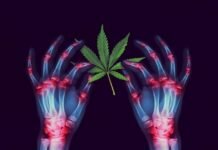
Marijuana has always been associated with lazy stoners who wear tie-dyed shirts, listen to Bob Marley all day, and have the perpetual munchies—like Spicoli from the movie “Fast Times at Ridgemont High.”
Once stereotyped as a person with a poor work ethic and poor hygiene, stoners of today don’t really fit that profile. Those who use marijuana represent all walks of life. Healthcare professionals, lawyers, high-ranking officials, and business people are smoking pot for a variety of reasons, including stress reduction, pain relief, anxiety reduction, and a list of other ailments and maladies, as well as for relaxation.
According to a recent news poll, in 2015 43% of Americans had used cannabis; that number increased to 51% in 2016. Read here:
With “weed” becoming more accepted in society, public opinion on legalizing pot has changed dramatically over the years. While proponents say there are legitimate reasons for legalization, there are those who are concerned about the drug’s effect on users and their communities. The controversy over marijuana—aka weed, pot, dope, Ganga, grass—legalization continues.
For those who want to use it, and those who don’t, legalizing it and having it available is … well, a no-brainer. There is some merit to those who oppose it out of concerns for the potential negative side-effects, including changes in brain function and, certainly, addiction.
What is it about marijuana that makes it appealing to those who use it recreationally, as well as those who use it for its medicinal properties?
Tetrahydrocannabinol (THC).
THC is a psychoactive compound, which is responsible for the “high” or “stoned” feeling one gets with its use, causing symptoms of euphoria, heightened mood, altered perception, increased awareness of sensation, increased libido, and often the munchies. THC has also been known to cause dry mouth, paranoia, impaired motor skills, increased heart rate, impaired memory and concentration, and problems with psychomotor coordination.
How does this happen?
THC activates cannabinoid receptors in the brain, including the hippocampus, prefrontal cortex, amygdala, and cerebellum. The compound THC activates CB1 receptors in those areas of the brain that cause the release of dopamine—a neurotransmitter that helps control the brain’s reward and pleasure centers. Dopamine is also responsible for some of the psychotropic effects associated with getting high.
Note: People with low dopamine activity may be more prone to addiction.
As you all well know, there are a lot of anecdotal statements and claims made about the efficacy of everything from how milk affects bone health to the benefits of long-term aerobic exercising.
Regarding cannabis, whether for medicinal or recreational use, it is important to be able to decipher between real science-based research and just someone or some group pushing an agenda.
That said, let’s see if we can get some clarity on the known health benefits of cannabis and the research on the detriments of its use.
Health Benefits
Data out of the Journal of the American Medical Association found only moderate evidence supporting the benefits of medical marijuana for certain health conditions.
Seventy-nine randomized trials were examined. The studies evaluated weed’s ability to alleviate symptoms, including chemo-induced nausea, anxiety, sleep issues, depression, psychosis, Tourette syndrome, and loss of appetite among HIV-positive patients.
Most of the studies showed improvements in symptoms among those using cannabinoid products versus placebos. The scientists admitted the quality of evidence in the studies was poor, and that large, robust randomized controlled studies are needed to confirm the medicinal effects of cannabinoids.
However, the strongest trials support the ability of cannabinoids to reduce pain.
Patients I see with chronic pain syndromes do report a reduction in pain after the use of marijuana. I also often hear of dramatic reductions in nausea created by toxic chemotherapy for the treatment of cancer.
THC was also shown to regulate genes associated with aggressive breast cancer. Id‑1 is a gene found in aggressive hormone-independent breast cancers; it produces a protein that increases cell proliferation, invasiveness, and metastasis of breast-cancer cells. Data found in Molecular Cancer Therapeutics states cannabidiol (CBD)—a cannabinoid—down-regulates the expression of the Id‑1 gene and subsequently made breast cancer cells less aggressive.
So, it appears that THC does have medicinal benefits, although, the consensus is the use of marijuana for medicinal therapeutics needs more controlled studies to prove benefits.
Hazards of Marijuana Use
As with any drug that can stimulate the pleasure and reward center (mesolimbic part) of the brain, there is the potential for addiction. Since addiction has a genetic component, it’s hard to determine who will be the one to become addicted to a drug once that drug is used.
Most drugs, including marijuana, target the brain’s reward system by flooding it with dopamine. Over-stimulation of the mesolimbic reward system with dopamine by drugs produces the “high” and euphoric effects that strongly reinforce using drugs to continue to get the high—aka, addiction.
The argument whether weed is addictive or not still rages on between users and non-users. Addiction is a disease determined by many factors, including a person’s unique genetic makeup. Regarding addiction, there is no way to determine who will develop an addiction to a substance until the substance is used and/or an individual has addictive traits and behaviors.
What does the research say about cannabis and addiction?
Research from Clinical Pharmacology & Therapeutics states that regular marijuana use builds tolerance to its effects, and induces a physical dependence characteristic of withdrawal symptoms upon cessation of drug use.
Researchers also found prolonged exposure to cannabinoids caused complex adaptations in the brain’s neuronal circuits, synaptic transmission, and gene expression. They also found cannabinoids excited the mesolimbic dopaminergic systems (reward and pleasure area of the brain) and, when use diminished, there was less natural dopamine in the brain, causing negative emotions and cravings.
It was also found that chronic cannabis users typically experience unpleasant withdrawal symptoms when use is discontinued, including: restlessness, appetite changes, thoughts and cravings for cannabis, nightmares/strange dreams, angry outbursts, trouble sleeping, and, sometimes, muscle aches, muscle twitches, and GI upset.
With plenty of research saying cannabis can be addictive, what are the health hazards seen with chronic use?
Data found in Neuropsychopharmacology, Proceeding of the National Academy of Sciences, The Lancet, Psychiatry and Clinical Neurosciences, and JAMA Psychology, states that the use of marijuana caused impairment of motor control and executive functions (impaired short-term memory; difficulty with learning and complex tasks; impaired decision-making; neuropsychological decline and a reduction in IQ—which was long-term; and psychosis. Cannabis was also shown to be neurotoxic.
It was damaging to the brain.
More alarming was the fact that adolescents (age 10–19) who were cannabis users had neurological impairment to brain structures, including the corpus callosum, cerebellum, hippocampus and amygdala.
What about the smoke that’s inhaled? Marijuana smoke was also found to contain more cancer-causing chemicals than regular tobacco, and the amount of tar inhaled and the level of carbon monoxide absorbed are 3–5 times greater than tobacco smoke.
While it appears there are select symptomatic benefits to the chemical THC found in cannabis, there are also proven dangers associated with its use.
Marijuana legalization
Legal marijuana makes a lot of money; take Colorado for example. Currently, state governments are pushing for legalization as a way to generate money. Perhaps they haven’t read the current research on the health hazards associated with its use.
For current users and their communities, legalizing marijuana poses some real issues. Cannabis has been shown to alter brain function; it’s neurotoxic to the brain; it has a whole host of side effects; and it impairs motor control. It was also shown to be addictive to those susceptible to addiction.
On the flip side of this, using the THC found in cannabis has improved certain symptoms associated with certain health conditions, which makes using THC medicinally promising.
Based on all of this information, it seems that legalizing marijuana would increase the already large population of users, thus increasing the chances of addiction and health consequences of its use.
Last, another concern with the use of marijuana for recreational purposes is the potential for it to be a gateway drug into other drugs, including opioids, heroin, cocaine, tobacco, and others.
Something to think about.
References:
Whiting PF, Wolff RF, Deshpande S, et al. Cannabinoids for Medical Use. A Systematic Review and Meta-analysis. JAMA 2015;313(24):2456-2473
Panlilo LV, Golberg SR, Justinova Z. Cannabinoid abuse and addiction: Clinical and Preclinical Findings. Clinical Pharmacology & Therapeutics Vol. 97(6);2015
Rocchetti M, Crescini A, Borgwardt S, et al., Is cannabis neurotoxic for the healthy brain? A meta-analytical reviews of structural brain alterations in non-psychotic users. Psychiatry and Clinical Neurosciences 2013;76:483-492
Volkow ND, Swanson JM, Evins AE, et al. Effects of cannabis use on human behavior, including, cognition, motivation, and psychosis: a review. JAMA Psychiatry 2016
DiForti M, Marconi A, Carra E, et al. Proportion of patients in south London with first-episode psychosis attributable to use of high potency cannabis: a case-control study. The Lancet 2015
Meier MH, Caspi A, Ambler A, et al. Persistent cannabis users show neuropsychological decline from childhood to midlife. Proceeding of the National Academy of Science. August 2012
Ramekers JG, Kauert G, Van Ruitenbeek P, et al. High-potency marijuana impairs executive function and inhibitory motor control. Neuropsychopharmacology (2006)31, 2296-2303



